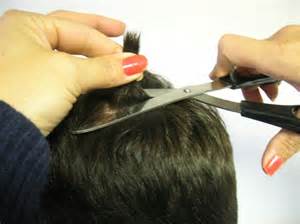Description
Hair Tissue Mineral Analysis (HTMA): Trace Elements Comprehensive Hair Test Plus Written Report + Diet Plan (USA
We offer Hair testing in the USA. If you live outside the USA but NOT in one of the countries listed below and you would like to do hair testing, please contact us.
The HTMA test is the most thorough and intelligent way of charting your detoxification process and get a detailed blueprint of your nutritional metabolic activity!
Hair Tissue Mineral Analysis (HTMA) Consultations:
- The report and the supplement and dietary recommendations that you will received are included in the fee. You are not required to purchase any additional consultation services.
- This test fee does not include any professional HTMA Practitioner consultation time about the hair test results.
- Private consultations are $299.95 for 1 hour or $499.95 for 2 hours by Skype or Zoom.
- This service is for those who want their results explained in greater detail plus offers additional homeopathic or other recommendations in order to improve a person’s progress more rapidly.
- The consultation fee is for additional advice and guidance with a highly skilled HTMA Practitioner.
NOTE: We cannot accept HTMA orders with a New York State billing, mailing or shipping address. New York State regulations (NY Public Health Law Section 574) do not allow hair samples collected from residents of New York to be processed at this time.
weDue to exclusive distribution agreements, we cannot except HTMA orders originating from the following countries:
- Australia
- Austria
- China
- Columbia
- Bahrain
- Brazil
- Denmark
- Dubai
- Ecuador
- El Salvador
- Finland
- Germany
- Guatemala
- Greenland
- Hong Kong
- India
- Indonesia
- Iran
- Iraq
- Korea
- Kuwait
- Malaysia
- Mexico
- Netherlands
- New Zealand
- Norway
- Pakistan
- Papua New Guinea
- Poland
- Singapore
- Spain
- Sweden
- Switzerland
- South Africa
- Saudi Arabia (and all Middle Eastern countries)
- Taiwan
- Thailand
- Turkey
- United Arab Emirates (UAE)
- United Kingdom
Instructions For Cutting A Sample For A Hair Tissue Mineral Analysis (HTMA):
- The lab Trace Elements, Inc. does not wash the hair at the lab. Washing the hair removes some of the loosely bound minerals and can reduce some mineral readings by 50% or more.
- Once you place an order for the comprehensive hair test, we send you the hair sample kit with complete instructions on how to take the hair sample.
- The kit is mailed by USPS to the address specified.
- The kit includes a lab submittal form with envelope, cardboard scale to ensure enough hair is collected (about 1 heaping teaspoon), and complete instructions on how to take the hair sample.
- Read the Trace Elements Hair Sample Collection Protocol.
- You then send the hair sample and submittal form to the lab (in the pre-addressed envelope), and the lab sends us your report by email.
- We send you a copy of the comprehensive report by email.
- Please Note: In most cases, the turnaround time to receive your hair analysis results from the time you place the order with us is about 2 weeks.
About The Multi-Element Assay (36 Elements) in The Comprehensive Hair Tissue Mineral Analysis (HTMA)
- Comprehensive analysis report: details graph results for 8 toxic metals, 14 nutritional minerals, 15 additional elements, 7 significant mineral ratios and 9 toxic metal ratios.
- 8 Toxic Heavy Metal Elements: Antimony, uranium, arsenic, beryllium, mercury, cadmium, lead and aluminum. These heavy metals are well-known for their interference upon normal biochemical function and causing numerous imbalances in the body.
- 15 Essential Minerals: Calcium, magnesium, sodium, potassium, copper, zinc, phosphorus, iron, manganese, chromium, selenium, boron, cobalt, molybdenum, and sulfur. These nutrients play significant roles in such metabolic processes such as muscular activity, endocrine function, reproduction, skeletal integrity, and overall development.
- 15 Additional Elements: Germanium, barium, bismuth, rubidium, lithium, nickel, platinum, thallium, vanadium, strontium, tin, titanium, tungsten and zirconium.
- 6 Significant Mineral Ratios: Ca/P, Na/K, Ca/K, Zn/Cu, Na/Mg, Ca/Mg, Fe/Cu. If the relationship between certain minerals in the body is disturbed, normal biological functions and metabolic activity can be adversely affected.
- 9 Toxic Mineral/Metal Ratios: Ca/Pb, Fe/Pb, Fe/Hg, Se/Hg, Zn/Cd, An/Hg, S/Hg, S/Cd, S/Pb. Individuals with elevated toxic levels may not always exhibit clinical symptoms associated with those particular toxic minerals. Research has shown that toxic minerals/metals can also produce an antagonistic effect on various essential minerals, leading to disturbances in their metabolic utilization.
- 11 Additional Ratios: Ca/Sr, Cr/V, Cu/Mo, Fe/Co, K/Co, K/Li, Mg/B, S/Cu, Se/Tl, Se/Sn, Zn/Sn.
- A calculated comparison of two elements to each other is called a ratio. To calculate a ratio value, the first mineral level is divided by the second mineral level.
- All mineral/metal levels are reported in milligrams percent (milligrams per one-hundred grams of hair). One milligram percent (mg%) is equal to ten parts per million (ppm).
- Reference Ranges: Generally speaking, the reference ranges in the report should be considered as guidelines for comparison with the reported test values. These reference ranges have been statistically established from studying an international population of “healthy individuals”. The reference ranges should not be considered as absolute limits for determining deficiency, toxicity or acceptance.
Comprehensive HTMA Report From The Laboratory Includes (10-15 pages):
- Emailed copy of test results showing a computerized a bar graph of high, low and reference range levels of the 36 elements listed below, including 8 toxic heavy metals.
- A graphic illustration of essential mineral ratios and important toxic ratios.
- A complete individualized evaluation and a detailed discussion of the patient’s metabolic type, current mineral levels and ratios, and their impact upon body chemistry.
- Recommendations of specific foods and food groups, along with an explanation of why each food is suggested.
- Supplement recommendations based upon age, sex, metabolic type, mineral patterns and specific need as seen on the tissue mineral analysis and other accompanying clinical test data and history. (Subject to additions or changes by the attending Practitioner.)

Trace Labs Sample Graph (2020 Ideal Values)





